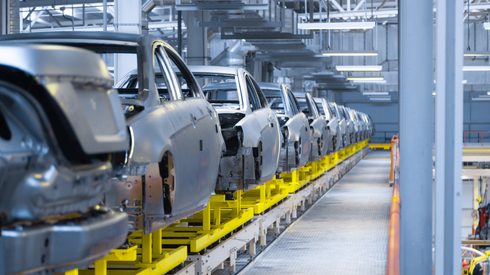The announcement comes after a July 25 briefing held at the US Capitol and will support the creation of an Alaska-Ohio-Arizona supply chain. The creation of a US supply chain is a crucial element for the future of EVs in the country and the reduction of its dependence on China for critical minerals, several sources have said.
“The US is currently 100% import-dependent for [anode active material (AAM)], both synthetic and natural graphite,” executive chairman Doug Smith told Fastmarkets on Tuesday.
“Graphite One is developing a complete US-based, advanced graphite supply chain solution anchored by the Graphite Creek deposit, recognized by the US Geological Survey as the largest graphite deposit in the US ‘and among the largest in the world.’ Subject to project financing, the Graphite One Project plan includes an advanced graphite material and battery anode material manufacturing plant located in Warren, Ohio,” Smith added.
Meanwhile, Lucid’s EVs are manufactured in Casa Grande, Arizona, representing the end of the Graphite One Project supply chain.
As set forth in the company’s 2022 Pre-Feasibility Study, graphite mineralization mined from the company’s Seward Peninsula Graphite Creek Property would be processed into concentrate at an adjacent processing plant.
Natural and artificial graphite AAM and other value‐added graphite products would then be manufactured from the concentrate and other materials at the proposed facility in Ohio. The release also notes that a recycling facility to reclaim graphite and other battery materials will be co-located at the Ohio site.
The Feasibility Study is expected to be completed in the fourth quarter of 2024, Smith said.
“Upon completion of the Feasibility Study, the next steps are to complete funding and proceed with the mine permitting. Once permits are approved, mine construction could begin,” Smith told Fastmarkets.
Graphite One has applied for a grant of $201 million from the US Department of Energy to assist in the construction of the AAM plant, he said.
“Results of this grant application are expected in the next three months. Discussions also continue with individual and institutional investors,” Smith told Fastmarkets.
The construction schedule is expected to allow for production construction of 25,000 tonnes per year of AAM by 2026, and 100,000 tpy by 2036, Smith said. The AAM is expected to be fully compliant with the Inflation Reduction Act (IRA) by 2029, he added.
“By combining the resources from the new Ohio facility with the natural graphite mined in Alaska for Lucid’s cars manufactured in Arizona, we are showcasing the importance of developing critical mineral supply on American soil,” congressman Dave Joyce said at the briefing.
The need for US developments in graphite was echoed in a recent Fastmarkets interview with Hugues Jacquemin, CEO of Northern Graphite, on July 19.
“China has been the big winner because they were there before anybody else. They have the lowest cost, and they move much faster than anybody else, so today they lead the charge. But that doesn’t mean that Europe and North America can’t get their act together and catch up, and that’s what the government is trying to do both in the US and Europe to protect this nascent industry,” Jacquemin said.
Quebec-based natural graphite miner and active anode material producer Nouveau Monde has also recently geared up to produce green graphite on an industrial scale in North America, completing preliminary works to build its ore-to-material second phase.
Other new and notable partnerships and projects in the EV industry include Volkswagen and Rivian’s joint venture to create new software technology, as well as Aurubis considering black mass recycling at its new location in Augusta, Georgia.
Fastmarkets analysts Georgi Georgiev and Amy Bennett estimated on July 16 that the total global demand for graphite will be 1.59 million tonnes in 2024, increasing by roughly 32% to 2.10 million tonnes in 2025.
According to Georgiev and Bennett, further developments in the graphite space are required to reduce the world’s dependence on Chinese anode supplies; but depressed graphite prices, the highly competitive nature of the Chinese graphite industry, China’s technological expertise and the extended qualification times for new anode material will continue to pose challenges to the diversification and localization of graphite anode supply in the next few years.
Keep up with the latest news, market intelligence and trends in the graphite market when you visit our dedicated graphite market page. Get an in-depth, 10-year view into where and when graphite supply will come online with our graphite long-term forecast.






